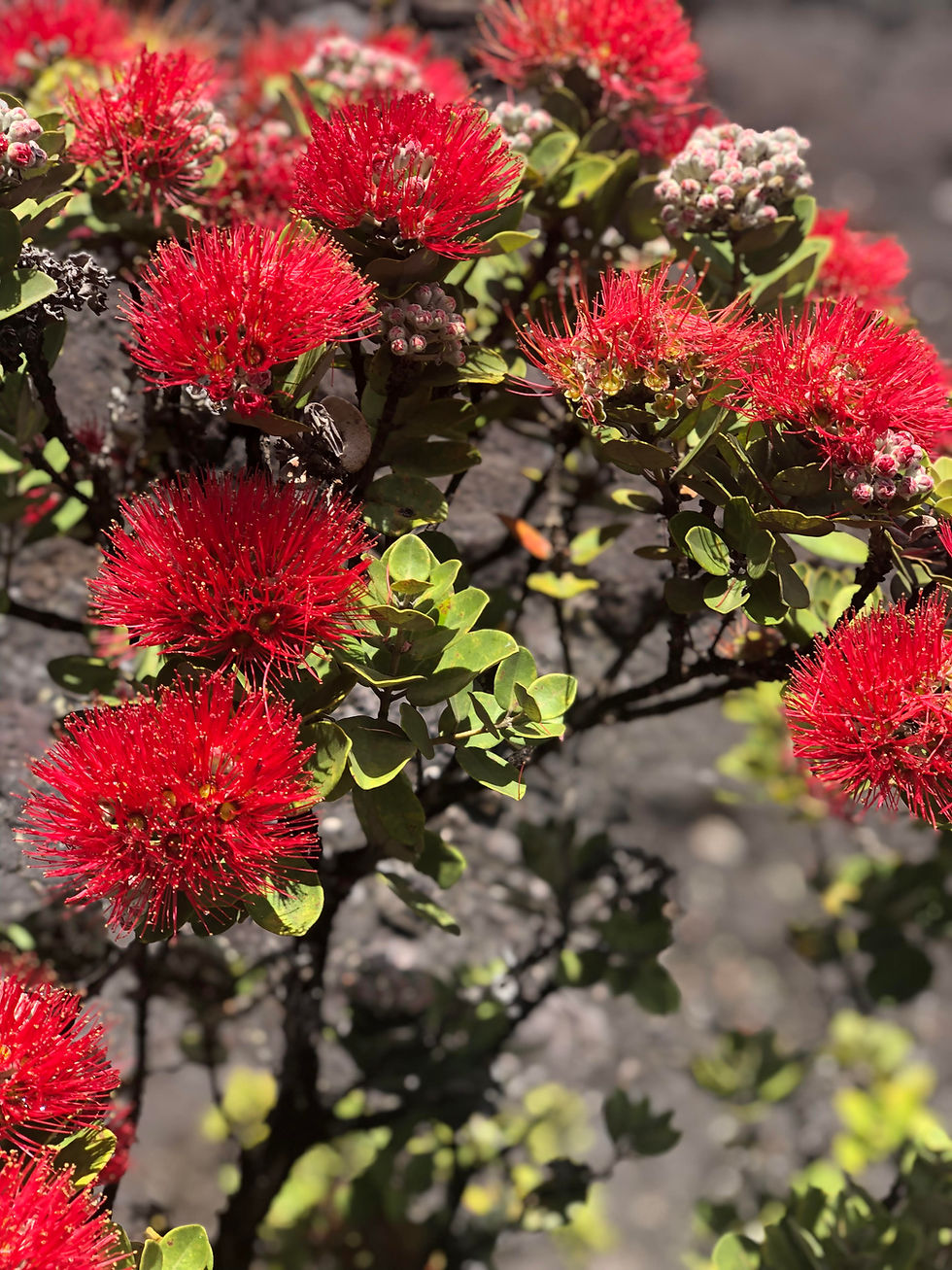

ʻŌhiʻa
Significance
One of the most cherished, storied, and beloved lāʻau central to the Hawaiian culture is the ʻōhiʻa lehua (Metrosideros polymorpha). A plant so deeply ingrained in genealogy, traditional moʻolelo, and a cultural landscape. The ʻōhiʻa can be found in countless oli, mele, ʻōlelo noʻeau, and moʻolelo that describe its connection to the ʻāina (land) and akua (gods).

The ʻōhiʻa can be found in countless oli, mele, ʻōlelo noʻeau, and moʻolelo that describe its connection to the ʻāina (land) and akua (gods). The ʻōhiʻa is also mentioned in passing in the Sixth Era of the Kumulipo, the Hawaiian genesis story.
ʻŌhiʻa is also vital to our everyday lives as it is critical to our watersheds as it comprises 80% of Hawaiʻi’s native forests and provides 50% more effectiveness of retaining moisture, feeding streams, and recharging aquifers. This tree also prevents erosion from occurring.
It is believed by some that the ʻōhiʻa is the kinolau, physical embodiment, of the fire goddess Pele. Can you think of other kinolau that ʻōhiʻa is associated with?
'Ōhiʻa & ʻŌlelo Noʻeau
Below are some selections of ʻōlelo noʻeau which make mention of ʻōhiʻa lehua. These are quoted from ʻŌlelo Noʻeau: Hawaiian Proverbs and Poetical Sayings by Mary Kawena Pukui (Bishop Museum Press, 1983). ʻŌlelo noʻeau are proverbs or poetical sayings which share knowledge, insights, humor and observations of our Hawaiian ancestors. Some sayings are followed by commentary provided by Pukui.
He kai lū lehua ko Panaʻewa.
Panaʻewa shakes down the lehua fringes into the sea.
Once, when the forest of Panaʻewa extended to the sea, fringes of the lehua blossoms were seen floating about in the water.
ʻŌlelo Noʻeau #659
Hilo i ka ua Kanilehua.
Hilo of the Kanilehua rain.
The Kanilehua rain, or the rain that patters in the lehua forest, is frequently referred to in the chants and songs of Hilo.
ʻŌlelo Noʻeau #1000
Hilo, nahele paoa i ke ʻala.
Hilo, where the forest is imbued with fragrance.
Hilo’s forest is fragrant with hala and lehua blossoms.
‘Ōlelo Noʻeau #1005
Hoʻonuʻa Hilo i ka lehua.
Hilo produces the lehua in abundance.
ʻŌlelo Noʻeau #1105
Ka ʻōhiʻa hihipeʻa o Kealakomo.
The entwining ʻōhiʻa branches of Kealakomo.
Kealakomo, in Puna, Hawaiʻi, where ʻōhiʻa trees grow thickly together.
ʻŌlelo Noʻeau #1511
Welehu ka malama, liko ka ʻōhiʻa.
Welehu is the month [when] the ʻōhiʻa trees are putting forth leaf buds.
ʻŌlelo Noʻeau #2932
He kumu lehua muimuia i ka manu.
A Lehua tree covered with birds.
An attractive person. A lehua tree in bloom attracts birds as an attractive person draws the attention of others.
'Ōlelo Noʻeau #713
